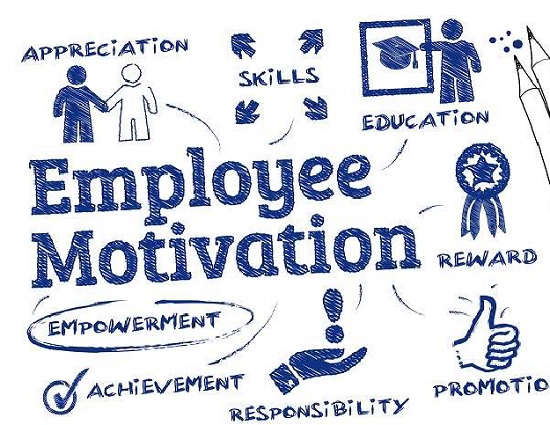
Candidates really don’t care who they work for.
The Great Resignation is an informal name for the widespread trend of a significant number of workers leaving their jobs during the COVID-19 pandemic. It’s sometimes also called the Big Quit. The Great Resignation is typically discussed in relation to the US workforce but the phenomenon is international.
With relation to the resignation challenge employees need to make sure they are candidate specific in their job postings however many have a lot to learn.
Job postings often emphasize employer branding by focusing on the company. The challenge with that is that a job post should focus on…the role.
Remember, a job posting is often the first contact your organization will have with a potential employee. It’s therefore essential that your postings generate interest in your position and your organization. The stronger your job advertisement, the more success you will have attracting more and higher quality applicants that will yield a higher application conversion rate.

In his groundbreaking 2019 bestseller ‘Nine Lies About Work,’ Marcus Buckingham, was spot on when he cited in Lie No. 1 that people really don’t care which company they work for.
Yet many job posts focus heavily on the company branding. What is more, they often speaking in generalities about the organization. Those are sometimes powerful platitudes, but often they are generic: Opportunities to succeed! Leading the way!
Sincere, ideal candidates want specifics. They demand to know if potential employers will value their strengths and talents. They also insist on insights into the team environments that they will become part of. Most of all, they require a deeper dive into the role so that they’re not left guessing what the job will be like.
The best influencers of all time get right to the heart of what drives people on a base level. Preaching to the candidate about how fast the company you are hoping to place them in is growing may not inspire them as much as you may think, however if you spin this to say; how much room there is for them to grow and gain experience at this company, you may get on the best side of the potential employee.
However despite the needs of candidates, the majority of job posts we see include overbearing employer branding that overshadows the role. Thing is, once people start working at your company, the role always overshadows the company. Thus, if you lure candidates with a heavy focus on broad issues like company culture at the expense of concentrating on the role in your job posts, you risk future discontent and eventually turnover.
That’s not to say that your; innovative, team friendly, career-nurturing, inclusively diverse corporate culture is not important. It is vital, in fact. But your culture should not trump giving people an idea of what it will be like to work in actual jobs at your organization. Remember what it all means to them!
Making the Role the Hero
It’s important to create a post for each job as unique as the job itself, one based upon a strategic focus built around what’s most important to the candidate.
In other words, take a step back and look at the job from a different perspective. Flip the emphasis upside down by imagining the job as a pyramid with the elements proven to make the most powerful, most impactful connections with ideal candidates at the top.
Start with the job itself — more specifically, what the candidate would love most about it. Second, reference the team dynamic they will be working within. And finally, at the base, forming the foundation for all the above, is the corporate culture — that is, your employer brand.

While it’s necessary to list a general job description, the majority of your ad should speak about your company’s core values, mission, the benefits and perks of working with you and why it’s such a cool place to be.
This sounds like common sense, but it’s also backed by evidence. In a recent study from the University of Vermont, researchers looked at 56 job ads where 991 respondents applied for work. The ads were split into two groups – those that focused on what the employer wants from the candidate, and those focusing on what the employer offers to candidates (career advancement, work autonomy etc.). Those ads focusing on the applicant were three times more likely to get higher-quality applicants. What’s more, those that did apply were a better match.
When you think of a job posting this way, it’s easy to see why efforts that focus largely on branding the company in job posts are often less than optimally effective at attracting ideal candidates.
Often, organizations focus on the bottom of the pyramid, basing everything on their employer brand, when the real attractive power lies at the top with the opportunity candidates can have to do what fulfills them. Candidates want desperately what we all want — to feel valued for the personal, distinctive talents and contributions they bring to their tasks and the role itself.
A recent report, called The 7 Key Trends Impacting Today’s Workplace, looked at things like employee engagement, retention, and organizational culture. According to the data, these were the top 5 motivating factors for workers:
- Camaraderie and peer motivation (20%)
- Intrinsic desire to do a good job (17%)
- Feeling encouraged and recognized (13%)
- Having a real impact (10%)
Which is why it is essential that you look at job postings for what they are — advertising. Make sure your posts leverage the awesome power to connect by focusing on the top two levels of the pyramid. That requires content that captivates, that engages and excites people about the work itself.
In turn, this means that you need to write a highly creative, eye-grabbing headline, combined with succinctly written, totally engaging content that brings the job to life.
Together, that will form a message that will have tremendous attractive power for your ideal candidates. Doing this effectively will also repel people whom you wouldn’t want to hire.
The net result would be getting more ideal candidates, but fewer total candidates, all of which helps create a tighter, simpler, shorter, more effective review/testing process. It also leads to a more competitive, more productive interview process to eventually hire good fits for your roles.
Brought to you by the top recruiters in the region :



